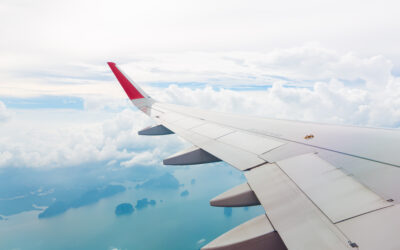In a world that’s constantly evolving, progress often hinges on our ability to embrace diversity and inclusivity. Yet, there’s one facet of diversity that has often been overlooked: the inclusion of people with disabilities in the workforce. That’s where National Disability Employment Awareness Month (NDEAM) steps in, shining a spotlight on the challenges faced by disabled individuals, the untapped potential we possess, and how companies can bridge the gaps.
The Significance of NDEAM
NDEAM, celebrated every October, serves as a crucial annual observance. It’s not just a month filled with symbolic gestures or measuring employment statistics; it’s a rallying cry for change.
But why does disability employment still need an entire month dedicated to it? The answer lies in the persistent barriers faced by people with disabilities in the job market.
Barriers Faced by People with Disabilities
Despite significant advancements in disability rights and accessibility, significant hurdles still hinder many individuals with disabilities from achieving their full potential in the workforce. Prejudice, misconceptions, and outdated stigmas persist. These barriers often manifest in various forms:
1. Stereotypes and Biases:
Myths and stereotypes about disability continue to influence hiring decisions, limiting opportunities for qualified individuals.
2. Lack of Accessibility:
Inaccessible workplaces and technologies can pose insurmountable challenges for disabled employees, making it difficult to perform jobs effectively.
3. Unequal Opportunities:
People with disabilities are often underrepresented in leadership roles, leading to a lack of diverse perspectives within organizations.
4. Inadequate Support:
Many companies still fail to provide the necessary accommodations and resources for disabled employees to thrive.
The Untapped Potential
In these barriers lies a missed opportunity for both individuals and businesses. People with disabilities bring a unique set of skills, experiences, and perspectives to the table. Our resilience, problem-solving abilities, and adaptability are assets to any modern workforce but our strengths often go unrecognized, under-utilized or untapped. By harnessing this potential, companies can gain a competitive edge.
How Companies Can Address Gaps
The path to a more inclusive workforce begins with awareness and action. Companies can take several steps to address the gaps and create a workplace that welcomes individuals with disabilities:
1. Promoting a Culture of Inclusion:
Promoting a culture of inclusion is not just about having a diversity statement on your website—it’s about creating an environment where every individual feels genuinely welcomed and valued.
Here’s a few actionable steps on how to do it:
-
Leadership Commitment: Inclusion starts from the top. Company leaders should champion diversity and make it a core value. When leaders actively support disability inclusion, it sets the tone for the entire organization.
-
Employee Resource Groups: Encourage the formation of Employee Resource Groups (ERGs) focused on disabilities. ERGs provide a space for employees to connect, share experiences, and advocate for inclusive practices.
-
Open Communication: Foster open communication channels where employees can express their concerns and ideas for promoting inclusivity. Create platforms for employees to share their experiences and stories.
-
Inclusive Policies and Practices: Ensure that company policies and practices are inclusive. This may include flexible work arrangements, accessible facilities, and inclusive language in internal and external communications.
2. Implementing Accessible Hiring Processes:
Ensuring that recruitment processes are accessible to all is a pivotal step in creating equal opportunities for individuals with disabilities.
Here’s a few steps to make it happen:
-
Accessible Job Postings: Ensure that job postings are written in a way that’s clear and concise. Mention any specific accommodations or accessibility features that the workplace provides.
-
Interview Accommodations: Offer flexible interview options, including remote interviews, and provide clear instructions on requesting accommodations. Allow candidates to choose the format that suits their needs best.
-
Training for Recruiters: Train recruiters and interviewers on inclusive hiring practices. They should be knowledgeable about different disabilities and how to make the interview process accessible and comfortable.
-
Technology and Tools: Make sure the application process, including the company’s career website, is fully accessible for screen readers and other assistive technologies.
3. Offering Accommodations:
Providing accommodations is a legal obligation in many places, and it’s essential for ensuring that employees with disabilities can perform their roles effectively.
Here’s a pathway on how to go about it:
-
Interactive Process: Engage in an interactive process with employees to determine their specific accommodation needs. Each person’s requirements may differ.
-
Flexibility: Be flexible in accommodating needs, whether it’s providing assistive technology, making physical adjustments to workspaces, or allowing flexible work hours.
-
Accessibility Audits: Regularly conduct accessibility audits to identify areas where accommodations can be improved, and keep up with evolving assistive technology.
-
Feedback Loop: Establish a feedback mechanism for employees to report issues with accommodations and ensure prompt resolution.
4. Providing Training and Awareness Programs:
Educating employees on disability inclusion and etiquette is key to breaking down barriers of misunderstanding.
Here’s how to approach it:
-
Comprehensive Training: Develop comprehensive disability awareness training programs for employees at all levels. Training should cover understanding different types of disabilities, appropriate language, and etiquette.
-
Real-World Scenarios: Use real-world scenarios and case studies to illustrate the challenges individuals with disabilities may face. This creates empathy and helps employees better understand the need for accommodations.
-
Inclusive Language: Encourage the use of inclusive language in all communications. Educate employees on the importance of respectful and person-first language when discussing disabilities.
-
Ongoing Education: Disability awareness is not a one-time event. Make it an ongoing part of your company’s culture by regularly updating training programs and promoting discussions around disability inclusion.
By actively implementing these strategies, companies can work towards creating an inclusive environment where the untapped potential of individuals with disabilities is harnessed, and barriers are continually broken down. It’s a journey that not only supports NDEAM but also contributes to a more diverse, innovative, and compassionate workplace throughout the year.
Ready to expand your knowledge? AccessNow’s educational resources await you! To delve deeper visit AccessNow’s Blog or Educational Programming.

About Our Founder
A photographer turned tech entrepreneur living with Muscular Dystrophy, Maayan Ziv launched AccessNow in 2015. Maayan is an avid travel enthusiast and a fierce disability advocate. She is an acclaimed public speaker, engaging audiences throughout the world on topics of diversity, equity, inclusion and belonging.
Latest on the blog
10 Years of AccessNow: Reflecting on 2025
2025 was a big year at AccessNow - it marked our 10-year anniversary, a milestone that gave us space to reflect on how far we’ve come and where we’re headed next. Throughout the year, we experienced moments of learning, collaboration, and growth that moved...
What’s New in the AccessNow App
We’re turning 10 — and we’ve just launched our biggest app update yet. Built with and for our community, this version of AccessNow brings a whole new look and smarter features that make it easier than ever to find and share accessibility info around the world. You...
Canada’s First Accessible Air Travel Forum
This fall, the Accessible Air Travel Forum hosted by UHN brought together researchers, industry leaders, and individuals with lived experiences to discuss the challenges faced by travellers with disabilities. Our very own Maayan Ziv delivered a keynote presentation,...




